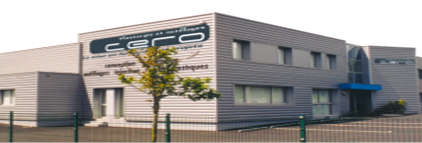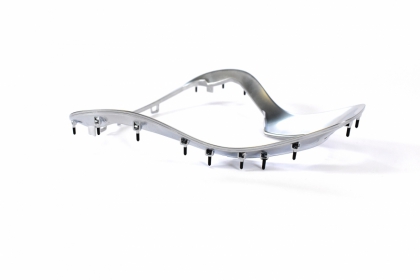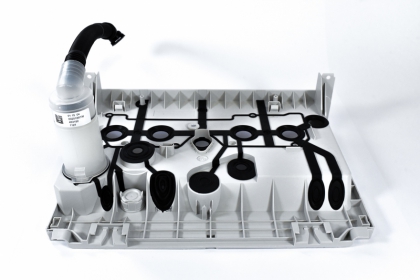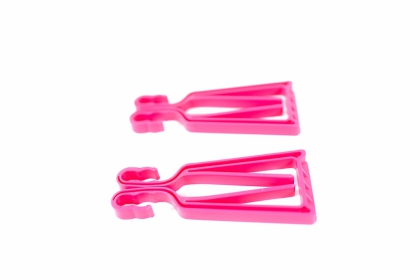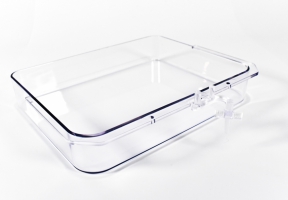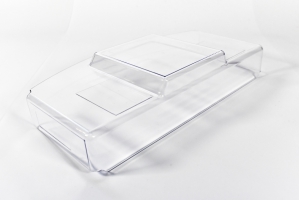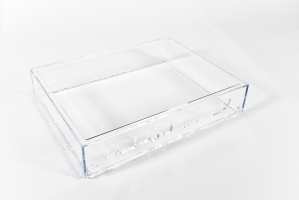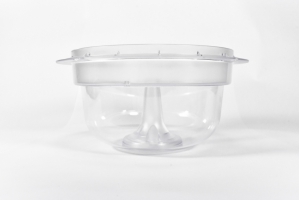Our know-how in thermoplastic injection
As a plastics processing company specialising in thermoplastic injection, PROCESS puts all its know-how into its work on your projects and in your business sector.We mould your components and component sub-assemblies using plastic and bi-material injection, as well as through SMC compression of thermosetting plastic.
We work through all the production stages: design, prototyping, mould and tool manufacture, production of components, assembly and finishing. As such, our workshops have a substantial stock of machines: injection, two-shot and SMC compression presses, plastics assembly machines, equipment for finishing components, paint booths, etc…
PROCESS’s facilities are based in Challans in the Vendée department (85), but its services radiate throughout France. Outside France, our company has facilities in Slovakia which are also equipped with injection presses.It means that the production lines on our Slovakian site enable us to support and supply our customer subsidiaries based in Eastern European countries.
What is thermoplastic injection?
Thermoplastic injection (or injection moulding) is the process enabling the moulding of plastic materials that have the capacity of softening under heat and hardening through cooling.It is different from compression moulding which works with thermosetting composite materials, whose finished shape cannot be reversed.
Thermoplastics: moulding through injection or two-shot
Because of their ability to change state under the effect of temperature, and to return naturally to their initial state, thermoplastics can be moulded without any chemical reactions or processes. Amongst their mechanical operating processes, injection moulding is the one that offers the greatest options.
The thermoplastic materials in the form of powder or granules are brought up to a high temperature before being injected in fluid state into a mould (or tool) using an injection press. Held under high pressure, the material returns to its solid state as it cools and the plastic component can then be ejected or removed from the mould.
Thermoplastic injection enables more complex processes to be carried out and may require additional finishing stages.PROCESS’s knowledge in this field allows us to offer you :
- the design of your components through "simple" plastic injection ;
- the combining of thermoplastic materials through two-shot ;
- the plastics assembly and finishing stages of your components.
Thermosetting: moulding using compression
Thermosets constitute a second family of plastic polymers. To work them, you need a chemical reaction or polymerisation and to mould them, a mechanised process is required, such as compression. Unlike thermoplastics, thermosetting materials cannot return to their initial state and it is not possible to reverse the end product.
The thermosetting materials that we work with are composites made up from a matrix (liquid polymer resin) and a reinforcing agent (such as glass fibre or carbon fibre).The combined properties of these components result in the end product having numerous qualities: high mechanical resistance, electrical and thermal resistance, etc…
Thermosetting plastics enable large components to be made, that are particularly well suited for the automotive, nautical, heating and ventilation industries, etc. PROCESS’s equipment and expertise enable us to offer you :
- the production of your thermoset components through SMC compression ;
- the finishing and painting of your thermosetting plastic components.
Thermoplastic, the core of our business
Because of its properties, thermoplastic offers a good alternative to materials such as glass or metal. The ease with which it can be worked helps the mass production of items or component sub-assemblies that can cover complex shapes, be made in substantial sizes and offer solutions that are suited to most business sectors.
Thermoplastic injection: which kinds of plastics are used ?
Thermoplastic materials are able to change to liquid state and return to their initial state when cooling. This process can be repeated practically ad infinitum. Apart from the possibility of recycling these materials or component parts of these materials, this property facilitates their mechanised moulding, particularly using injection presses.
However, where injection moulding is still commonly used, this process does not suit all thermoplastic materials or all types of components or objects. As such, PROCESS is able to offer you its expertise in order to work out with you the feasibility of your projects, propose technical solutions and select the appropriate materials.
Our know-how and production lines then enable us work on any thermoplastics suitable for injection :
- polypropylene (PP) : bumpers, technical structural components, etc...;
- polystyrene(PS) : household appliance casings, whether in recycled materials or not;
- polycarbonate (PC) or PMMA: transparent plastic glass alternative;
- ABS : casings designed for machines or equipment, etc...;
- thermoplastic elastomer (TPE) : flexible and ergonomic components or components offering a seal function;
- polyethylene (PE) : plastic guides or rails, etc...;
- polybutylene terephthalate (PBT) : electric components… ;
- etc.
Scope of application of thermoplastic injection
Used as an industrial, technical and economic alternative for materials such as glass, metal and ceramic, thermoplastic materials enable all types of components to be produced, from mass production to the most specialised parts: precision components, design-based components, functional technical parts, sub-assemblies combining materials, etc...
As a specialist in thermoplastic injection, PROCESS designs, produces and finishes components for all business sectors. Providing solutions for numerous fields of application, we create fast-moving consumer goods as well as luxury items or components produced using the latest technical innovations :
- automotive sector : head-up display, passenger compartment equipment, windows, grilles, etc…
- medical sector : active medical devices (AMD), perineal rehabilitation probes, etc…
- rail sector: equipment and accessories for carriage interiors, table frames, etc…
- household appliances, thermal comfort: boiler plates, household appliance casings, etc…
- etc.
